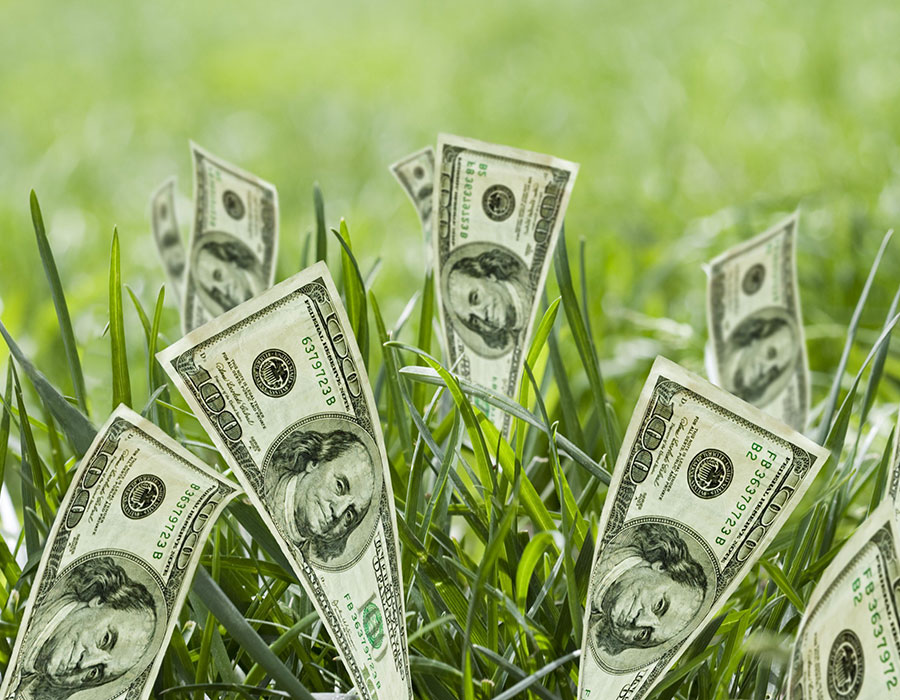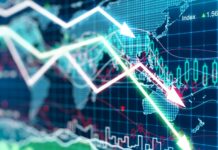This investing podcast interviews industry experts so you’ll learn what to do, what to ask, and ideally how not to lose money. I’m just like you… I want to make money from the stock market but I find the terminology confusing and it’s hard to know where to start. Personally, I want to make informed decisions. Let’s learn together on Intel for Investors!
Today’s Episode… Who Imagined Investing In Commodities Could Be FUN & Profitable!
INTEL FOR INVESTORS
Stephen, before we take a deep dive into commodities, can you give the definition of a commodity in layman’s terms? Remember, many people reading this article or listening to our podcast are beginners, just learning about investing. When we use phrases like ‘investing in commodities‘ it’s super important that people understand what we are talking about as a concept.
Dr. Stephen Leeb, Ph.D.
To put it simply, a commodity is something tangible, something you can touch. Natural resources such as minerals, metals, rare earths, or raw materials that come out of the ground are used for manufacturing or industrial purposes. A commodity can be anything from copper which you could touch… To coal which you can burn. Energy commodities encompass oil, natural gas, fossil fuels, or wood (biofuel.) Another definition of a commodity could be food, livestock, or precious metals… even clean water is a commodity.
Commodities are especially important in developing countries where there is little existing infrastructure and industrial materials are needed to build housing and manufacturing capacity. Commodities are essential to build a modern world.
As countries grow and mature, services become more important, and fewer commodities are needed because modern infrastructure already exists. Even in the most developed countries in the world, even in very service-oriented countries, you still need commodities. Computers require a lot of electricity and electricity requires commodities. Any person sitting in front of a computer is using silver and natural gas, and a vast array of these hard commodities must be extracted or mined from the earth.
Some commodities grow above ground and that’s foodstuffs. That’s also going to be an issue and it’s another investment that you should be looking into. Not only the companies that plan and produce food but also the companies that make it possible to do it most efficiently. One example, if I can mention a company, would be Deere. It’s probably one of the most technologically advanced companies in the world regarding food production. When we think of technology- we think of companies on the NASDAQ. But Deere has a lot more to do with what society needs over the next 20 or 40 years than any of these other companies in terms of information technologies. Deere is an autonomous company that makes it possible to plant crops in a way that’s most consistent with current and future weather conditions because they have forecasting tools and it’s done automatically with as little labor possible.

INTEL FOR INVESTORS
When you dive a little deeper into Deere and hear about the technologies they’re implementing, it’s advanced to the stage where they know exactly where every seed in a field is located. The fertilizer they need for each plant can be measured out to the microgram. This autonomy technology is astonishing. It’s a truly remarkable company and they’ve done truly remarkable things. Deere is a mere example of several like-minded companies around the world. To a large extent, what Caterpillar has done for the mining industry is comparable to the innovation Deere has done for the farming industry.
Dr. Stephen Leeb, Ph.D.
In the not-so-distant future, many commodities are going to end up in short supply. One of the biggest challenges the world faces is the ability to manage these scarcities. The key to managing commodity scarcity is the evolution of innovative technology. Humanity needs food, and the world needs critical commodities to survive and evolve as a species.
INTEL FOR INVESTORS
Let’s segue to another trending topic that many of our listeners are curious about. What’s the relationship between gold and emerging markets? Why has it become so important to BRICS and the New World Order?
Dr. Stephen Leeb, Ph.D.
Governments look to gold to govern spending (as they did after WW2) because most of the gold mined on this planet still exists. Gold is not consumed nor does it deteriorate like other commodities such as copper, silver, zinc, oil, or lead.
And not all, but much of the profits will accrue to gold miners over the next 20 years. Meaning that whatever gold is left in the ground and the cost to mine and refine that gold will largely contribute to its spot price flux. The other factor that will affect the price of gold is, of course, the open market. Gold is due for a reevaluation as BRICS gets ready to launch a new currency backed by gold.
More profits will come from rising gold prices and miners’ ability to control the cost of getting that gold out of the ground. So, I think that’s also important to recognize. What makes gold very special as a commodity- is that it’s not consumed. It’s not prized for its industrial use because other metals can easily substitute for a fraction of the cost. Fossil fuels and oil are prized because they produce energy. Silver is prized because it’s used in photovoltaics and many technologies. We don’t need to use gold. Gold is prized for its intrinsic beauty. It has inherent value in and of itself. Perhaps philosophers and economists can get together and determine why… but the fact remains that gold has been used as a currency and revered for thousands and thousands of years.
To clarify, I’m not a gold bug. I’m an economist who came into this industry believing that gold was merely a relic. However, I’ve come to believe that in a way… Gold is a relic albeit a necessary one. And we’ll need it to serve as a doorstop for the out-of-control money printing and spending that’s happening globally in terms of fiat currency, otherwise known as paper money.
It’s both wise and necessary for every nation to implement monetary discipline. Humanity has advanced to a one-world economy and it’s critical to maintain fiscal responsibility. The infamous gold standard served as a financial mooring to control spending here in the United States until we went off the gold standard in 1971. Every country must have discipline in their spending. The only way the United States has ever been able to accomplish this type of monetary discipline (historically) was to back our currency with gold… Something that’s fixed and its price can be controlled over time. And the price of gold will rise, I think very dramatically over time.
INTEL FOR INVESTORS
For new investors, what is the best way of investing in gold? I believe there are three main ways of investing. Buying gold mining stocks, buying bullion, or ETFs. Are there any more ways, and if so, what’s the best?
Dr. Stephen Leeb, Ph.D.
I would say, keep it simple and invest in gold ETFs. I don’t see anything wrong with that strategy. However, there are people much more bearish- more doomsday orientated– that avoid all financial assets and only buy gold bullion. If you are fixated on physical gold, many reputable gold dealers in the United States offer competitive pricing.
When it comes to gold mining stocks, there are many caveats. The big-cap miners are already producing gold, therefore, the stock prices are higher. There is generally less risk with the big cap miners and they often pay a dividend. Mid and small-cap junior miners can be somewhat speculative investments. These mining operations may be waiting on critical environmental permits that could make or break the endeavor. The other issue with mid cap and junior miners is capital. It typically takes five to ten years for a mining operation to start producing and during that period, they could go bankrupt if capital investments run dry. On the flip side, junior miners can potentially have the biggest upside potential because their stock may trade for under $1 until they get the green light (permit-wise) and then you suddenly have a five to twenty-fold gain on your investment.
INTEL FOR INVESTORS
So, buy bullion if you are leery of financial assets or the volatility of the stock market.
Dr. Stephen Leeb, Ph.D.
Yes, buying bullion is a good idea too but storage and insurance can be costly and it’s not for everyone. For new investors just starting out, I would recommend buying ETFs that track the gold industry.
INTEL FOR INVESTORS
Let’s just assume that we’re not going to go through a doomsday scenario where gold is the only currency available and we are living off canned food in our bunkers. The economy will keep going on…
Dr. Stephen Leeb, Ph.D.
Yes. that’s my assumption.
INTEL FOR INVESTORS
Because there are doomsday scenarios where people are buying bullion and they’re incredibly bearish where there’s going to be some big catastrophe in which we’re going to need gold.
Dr. Stephen Leeb, Ph.D.
I’m an optimist. If we’re not going to get through the next 20 or 40 years, what’s the point? I think we will. I’m very optimistic that we will make this global transition and become an integrated society with far fewer inequalities. I think mankind can do it. We’ve always been faced with unique challenges and I’m hopeful we can get through those challenges.
Gold should be a part of your portfolio. But not just gold, focusing on stocks that can help humanity build a critical ‘sustainable energy’ infrastructure on a global scale. There are a lot of commodity stocks involved in that type of transition and companies that most people wouldn’t normally think to invest in.
For example, Royal Dutch has done so much work in shifting its product line from just oil to liquefied natural gas- which has a much lower carbon footprint. These companies are going to be essential to guide us through this sustainable energy transition.
Unfortunately, you can’t magically flip a switch and all of a sudden the entire world has gone green. That’s simply not going to happen. It’s going to take 50+ years to build out a sustainable energy infrastructure on a global, grand scale for a future society.
Most people won’t like what I’m about to say… Essentially, we need to use up the Earth’s endowment of oil, coal, and liquefied natural gas to create a permanent, sustainable energy infrastructure across the globe that’s no longer reliant on fossil fuels. And that’s reality, folks.






















